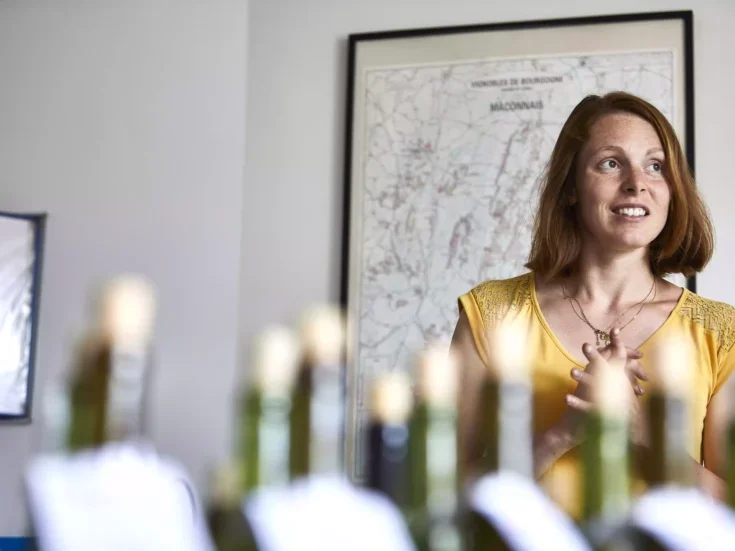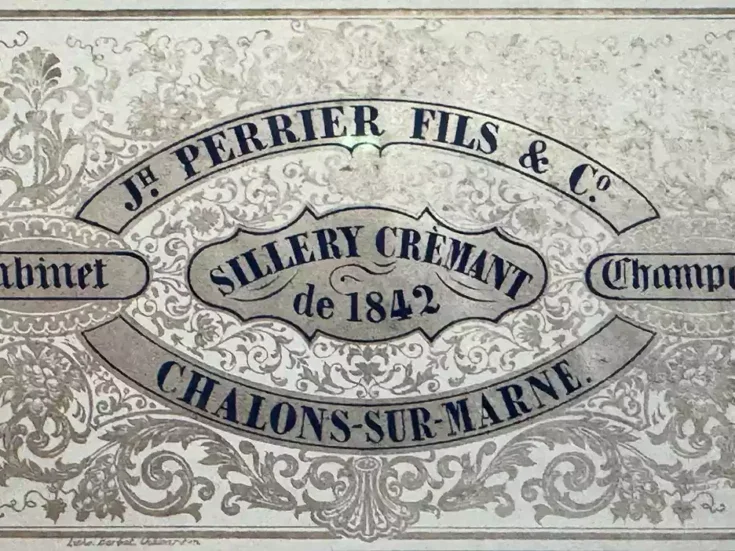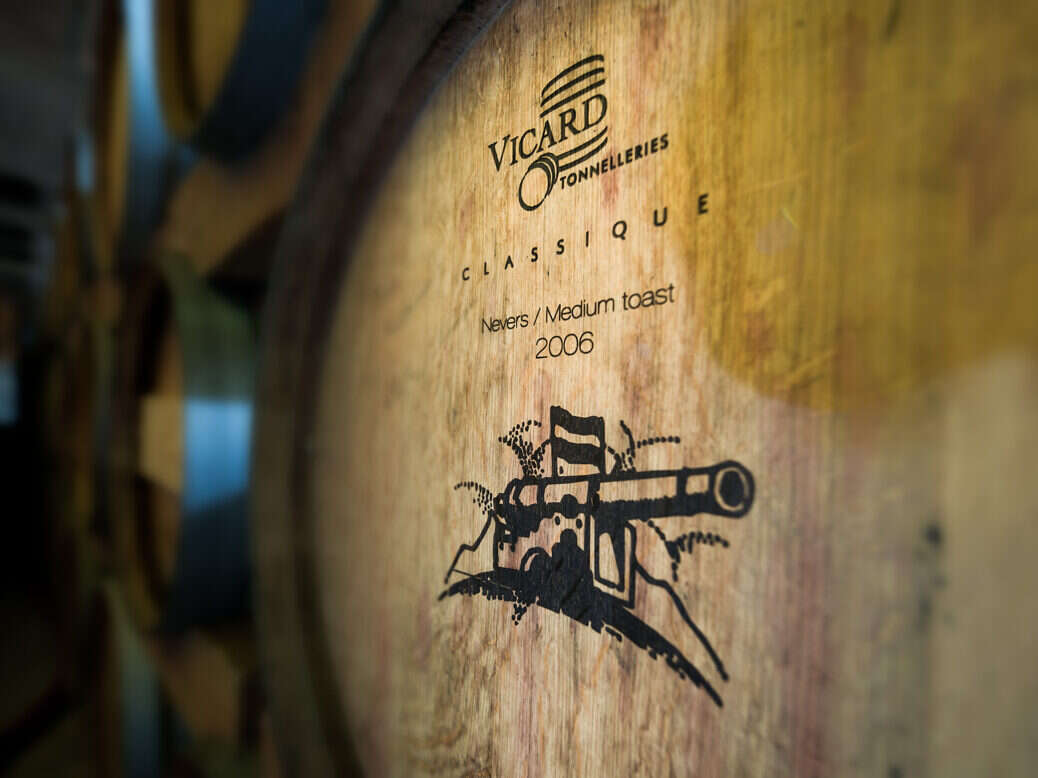
Anthony Rose reports from the first-ever UK vertical of Kanonkop Black Label Pinotage, a wine that has helped rescue the reputation of the divisive South African red variety.
When a group of Masters of Wine returned from a trip to South Africa in the 1970s, they were so dismissive of its Pinotage that the local grape variety was to suffer a host of indignities over the following years.
Hardly any Pinotage was planted in the 1980s, and its reputation nosedived so spectacularly that it was largely ignored by consumers as simply not being on a par with the flagship varieties of other countries, such as Argentina’s Malbec or Australia’s Shiraz. Recognition arrived very late, when in 1987 Kanonkop’s then winemaker, the now quasi-legendary Beyers Truter, won the Diners Club award for his Pinotage.
On May 10 at 67 Pall Mall in London, with fitting continuity, Kanonkop’s winemaker Abrie Beeslaar, with owners Paul and Johann Krige in attendance, gave the first ever presentation in the UK of an entire vertical of Kanonkop Black Label Pinotage. Johann Krige started by explaining how Black Label had come about. On the discovery of a particularly remarkable wine, Beeslaar, who started working with Kanonkop in 2002, kept it separate for three to four years, and when the time came for him to blend it back into the estate wine, he asked Johann and Paul if Kanonkop could do something special with it.
Johann and Paul agreed to do a special release of 1,000 bottles, and a subsequent conversation with UK wine buyer Allan Cheesman (and a merry evening by the sound of it) led to the creation of Black Label Pinotage. The original idea was to do an en primeur release of the 2008 vintage, but the financial crisis put the kibosh on that, and the 2009 wasn’t bottled because, as a result of excessive VA, it didn’t pass muster—so the first en primeur offer was of the 2006 vintage, in 2010.
“Black Label Pinotage is unique and different, and it’s connected to the age of the vines,” said Abrie Beeslaar, before presenting the vertical tasting of vintages from 2006 to 2019. “We wanted to show what old-vine, dry-farmed Pinotage tasted like, and what’s important to note is that the project was from the soil upward, something the vineyard showed me, rather than me trying to create something from the boardroom downward. Kanonkop is unpretentious. We make wine; that’s what we do and what we love doing.”
Pinotage: A special variety and wine
With a recap on its history, Beeslaar explained that Pinotage is a crossing of Pinot Noir and Cinsaut, originally developed in 1924 by IA Perold, who loved the two varieties. He had brought back a lot of Pinot Noir clones from Burgundy, following which the first seeds were taken from the crossings in 1925. Left in his garden after Perold accepted a job with KWV, they were rescued by Charlie Niehaus, a young lecturer, who took them from there to Elsenberg Agricultural College for propagation by Professor CJ Theron.
The first Pinotage was planted at Kanonkop in 1943, and the oldest vineyards today are from 1953, making their unirrigated bush vines 69 years old. The first commercial Pinotage bottling was in 1959, under the Lanzerac label, and the first to be released under the Kanonkop label was in 1973.
The rot that was to set in, though, was more than simply an image problem. As Beeslaar explained, the negative comments from the Masters of Wine were a direct result of problems at the time with the winemaking. “We messed it up in the cellar. When we came back out of isolation, we weren’t that well traveled, and we had a style of what we thought was South African, making red wine as a red wine irrespective of the variety, so it was a can of acid here, two cans there.” But as Beeslaar pointed out, Pinotage is a very specific variety and one for which you can’t just follow the same recipe, as you can for other red varieties.
To understand why not, you have to get under the skin of the variety and work out how it ticks. So, for a start, Beeslaar told the assembled audience, Pinotage has the highest malic acid, the highest pH, and is the quickest to ripen from veraison to harvest. A fast fermenter, Pinotage will finish after four days, when Cabernet Sauvignon, for example, will take eight days.
“All these things are different, and if you don’t understand it, you’ll mess it up with very high pH, and extraction can be inaccurate because of the short fermentation. A lot can go wrong, and you can end up with residual sugar and acid levels that are out of whack. At the same time, the first research on bitterness in the 1990s worked out it was bacteria-based, not bird damage.”
Addressing the issue of leafroll virus, Beeslaar admitted that it’s a reality in South Africa. However, fortunately for Pinotage, it’s early-ripening, so the plants are not all that affected by the time the grapes are picked. Every vineyard that’s replanted is kept 100 percent clean, and any infected plants are removed every year. There’s only a limited amount of plant material they can order compared to Pinot Noir, but the quality of the material is improving.
The wines for Black Label come from Block 202 in a 3.8ha (9.4-acre) vineyard, planted in 1953 on R99 rootstock, situated to the west of the property on a low-lying slope facing northeast.
Ancient soils
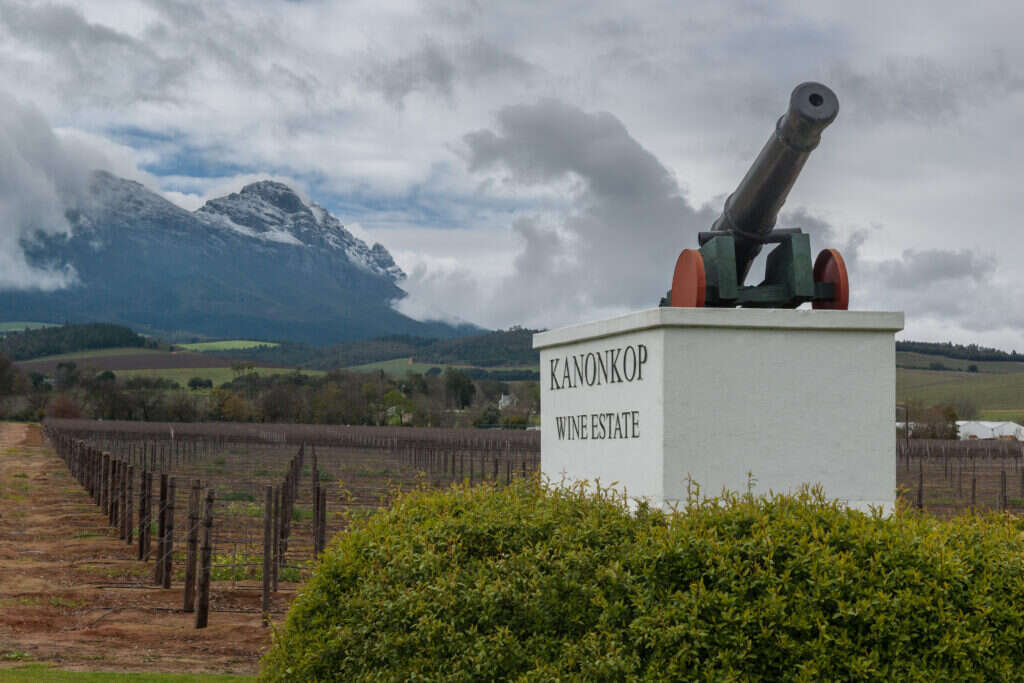
Now some 500 million years old, the soils are decomposed granite and Hutton soils, the red color coming from iron-oxide mottling, showing that the soils are well aerated. Soils in South Africa are generally vigorous, so, Beeslaar explains, “We unintentionally limited the vigor of the soil by not being able to plow very deep because of the bedrock. We prepare it as deep as possible for maximum root development to bolster the vines against drought, thereby creating an unplanned balance in the vineyard.”
Harvest is normally around mid-February. Temperature, water, and wind are the main factors affecting ripeness. In the cellar, the winemaking for Black Label involves punching the cap down by hand in shallow fermenters, “which is very labor-intensive and expensive, so most wineries won’t do it, but it gives us more control over the winemaking. We always ask what will be better for quality.” The stems are too green for whole-bunch fermentation, so the grapes are destemmed, and no whole bunches are used.
During punch-down, Beeslaar aims for maximum extraction in the right time frame, extracting as much color as possible at the beginning, getting good structure, rather than toward the end, when the alcohol shoots up and there’s greater potential for harshness. “It’s seldom that we don’t end up with phenolic ripeness. If you do an extended maceration, you are likely to end up with an unbalanced wine by extracting what you don’t want.”
The acid drops during malolactic fermentation, so he adds tartaric acid at crush as a one-off adjustment. If the vintage is perfectly ripe, he will carry on punching down almost to dry, whereas if the grapes are less ripe, he will stop at around 10° Brix to avoid harshness. The temperature of the cap is never 2° higher than the juice, while oxygen is the catalyst that stabilizes the tannins. The color always stays youthful because of the method of extraction. After malolactic fermentation, all Kanonkop Pinotages are sterile-filtered.
As for maturation, Kanonkop started to move from Bordeaux to Burgundian oak in 2019. François Frères and Tremeaux are “much more focused Burgundian oak,” says Beeslaar. They use the chimney-stack method of seasoning of the oak. 100 percent new oak is used for Black Label, which absorbs it well. “The oak adds an elegance and softness that work well with Black Label.” In total, Kanonkop makes 80,000 six-bottle cases of Kadette Pinotage. The estate Pinotage is between 12,000 and 13,000 cases. Black Label is 7,000 bottles, up to 8,000 in good vintages.
Tasting Kanonkop Pinotage
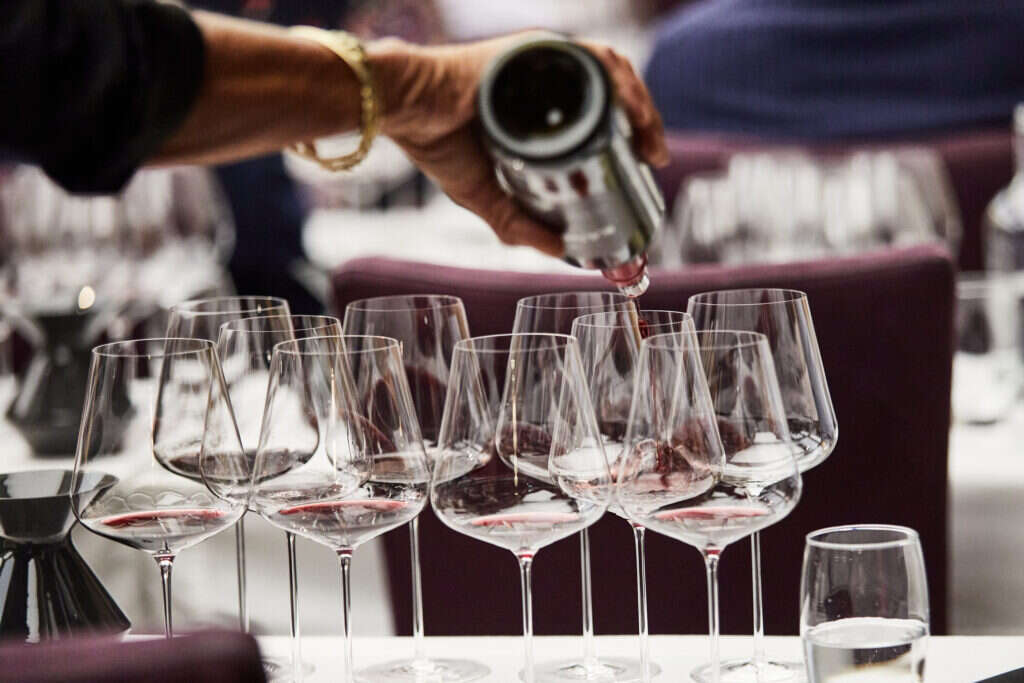
Flight 1
2012 Kanonkop Estate Pinotage (14.5% ABV)
Strawberry, youthful color, just shading to garnet. Highly aromatic, with light, dusty, savory aromas and some sweetness of oak developing. Smooth-textured dark strawberry fruit, with juicy mid-palate sweetness and supple tannins in a mature red that’s well supported by a refreshing backbone of acidity. | 90
2019 Kanonkop Estate Pinotage (14.95% ABV)
A vivid youthful ruby in color. Savory oak top notes are followed by a fruit quality whose youthful, ripe dark cherry and plum combine well with a richness of texture supported by juicy acidity, an obviously powerful vigor holding the structure of the wine firmly in place. | 91
Flight 2
2006 Kanonkop Black Label Pinotage (14.5% ABV)
An evolved ruby garnet in color. Smoky oak and roasted coffee aromas precede a mouthful with plenty of sweetly ripe, powerful, rich dark fruit, turning to savory, while the tannins, still firm, are only just starting to ease in a sturdy wine that ends up dry red in style. Impressive if not exactly the most elegant. | 91
2007 Kanonkop Black Label Pinotage (14% ABV)
Garnet in color. There’s an evident sweet oak spiciness of aroma, with a hugely appealing mid-palate black-cherry fruit richness tempered by spicy oak and a sweetly succulent texture. This is still remarkably fresh and finely balanced, a savory note on the finish bringing an elegance that’s closer to Pinot Noir than is the sturdier 2006. | 95
2010 Kanonkop Black Label Pinotage (14.5% ABV)
Behind the ruby garnet hue, this Black Label is intensely aromatic, with a super-rich, cherry fruit quality whose elegantly supple tannins are evolving beautifully, supported by background spicy oak, and still showing plenty of vigor. The structure ensures a good ten-year life yet to come. A seriously delicious wine. | 95
2011 Kanonkop Black Label Pinotage (14.5% ABV)
The color is still youthful. The aromas are more evolved than for the 2010, with a hint of roasted coffee-bean oak and gaminess, showing succulent dark red fruit in the mouth, still relatively youthful, with a sweet/savory balance in which the plump and juicy dark-fruit richness is supported by a firm spine of fresh acidity and finely balanced tannins. | 95
2012 Kanonkop Black Label Pinotage (14% ABV)
More evolved than most (a pH over 4), shading to garnet, perhaps in part due to the heatwave in January. Dark cherry and spicy oak in the aromas, medium concentration, a quality supported by judiciously applied, sub-threshold oak but pulled up short by rustic extraction, thereby showing a certain dryness of tannin on the finish. | 89
2013 Kanonkop Black Label Pinotage (14.5% ABV)
A deeply saturated youthful ruby hue. This intensely aromatic red displays a sumptuous purity of cherry fruit that’s closer to Pinot Noir in style, yet whose richness and concentration is supported by a sumptuous texture, excellent weight and length thanks to succulent tannins, beautifully judged oak, and a firm spine of refreshing acidity. | 95
2015 Kanonkop Black Label Pinotage (14.6% ABV)
Evolved garnet in color and relatively mature for its age. This is attractively fragrant, with rich, concentrated dark-berry fruit, well supported by spicy oak, all contained in a firmish structure of overt, spicy new oak, moderately extracted tannins, and fresh acidity. Despite its flattering charm, the new-oak spiciness is stylish, and the wine finishes with a pleasing dry twist. | 94
2017 Kanonkop Black Label Pinotage (14.51% ABV)
A vivid, deep, almost-ruby, purple hue. Youthful, still primary aromas combine with spicy oak and dark fruit in a powerful, youthfully muscular red whose succulent sweet core of black-cherry fruit is initially firm. While still youthful, it evolves nicely, softening in texture, all the while maintaining its firm structure of oak, tannin, and freshness. | 94
2018 Kanonkop Black Label Pinotage (14.61% ABV)
A vivid ruby color. The primary dark-berry fruit aromas presage a lovely purity and freshness tempered by sub-threshold oak, continuing on the palate with a full-flavored purity of dark-cherry fruit nicely tempered by spicy oak, fine tannins, and fresh damsony acidity. The result is a wine of power, albeit one that finishes a tad on the dry side. | 93
2019 Kanonkop Black Label Pinotage (14.6% ABV)
This was a vintage of uneven budding, in which the old vines were picked, unusually, before the young vineyards. Vivid in color, this youthful red, the first matured in Burgundy oak barrels, has a sublime fragrance, combining savory oak and sweetly ripe cherry fruit. It’s still in the first flush of adolescence, with a marked purity of cherry and berry fruit and a fresh spine of damsony acidity, supported by beautifully judged oak. Something of a different animal from its predecessors. | 95
Flight 3
Not part of the Masterclass but served with lunch.
2008 Kanonkop Black Label Pinotage (14% ABV)
Garnet in color. The most evolved of the older wines, this is gamey, almost leathery, in aroma, the initial chocolaty sweetness of almost gran reserva Rioja-like fruit turning to savory. And while the tannins have evolved into leathery maturity, the wine is starting to show its age, so it needs to be drunk up soon. | 92
2014 Kanonkop Black Label Pinotage (14.6% ABV)
Already starting to evolve to garnet, this is relatively mature compared to the 2013 and 2015 either side of it. The aromas show plenty of roasted coffee oak, and the fruit is just a little more on the rustic side, though there’s some attractive mocha and plum sweetness tempered by savory oak and a nice fruit juiciness, finishing on a slightly extracted dry note. | 92
2016 Kanonkop Black Label Pinotage (14.74% ABV)
There were big fires in the hills in this vintage, but Black Label wasn’t affected. Vivid ruby in color, this shows youthful dark-cherry fruit aromas nicely tempered by oak, good, full-bodied, ripe, sweet, dark-cherry fruit, with an appealing suppleness of tannin and juicy, fresh acidity, albeit slightly drying on the finish. Perhaps not as concentrated and long as the 2015 and 2017 either side of it but rather charming nonetheless. | 92

